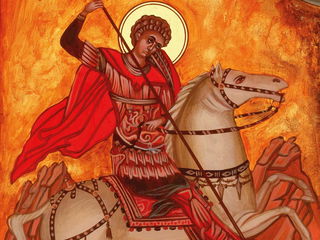Easter is one of the most celebrated Christian holidays that commemorates the resurrection of Jesus Christ.
In 2025, Easter would be celebrated on April 20.
Unlike the holidays that have a fixed date, Easter is a “movable feast” which means the date changes each year.
The timing of Easter is based on a mix of astronomical and church traditions, highlighting its historical and spiritual importance.
This system is created to ensure that Eastern aligns to the Jewish Passover, given its historical connection. The Jewish Passover was based on lunar cycles, and The Last Supper that Jesus had with his disciples was a Passover feast.

The Meaning of Easter
Easter carries profound spiritual importance for Christians, marking Jesus Christ’s resurrection and triumph over sin and death. It signifies hope, renewal, and eternal life, reaffirming God’s promise of redemption. For believers, Easter offers a moment to deepen their faith, practice forgiveness, and honor the transformative power of Christ’s love. Beyond its religious significance, Easter also reflects themes of rebirth and fresh starts, coinciding with spring and nature’s renewal.
Is Easter Always in April?
Easter is a movable feast, meaning its date changes each year. In Western Christianity, it falls on the Sunday after the Paschal Full Moon, which occurs between March 21 and April 18. This means Easter can be celebrated any time between March 22 and April 25. In the Eastern Orthodox Church, the date varies as well, typically falling between April 4 and May 8.
History of Easter
Easter is an important Christian celebration marking the resurrection of Jesus Christ, which is an event that took place in Jerusalem about 2,000 years ago. The resurrection, central to Christian faith, represents victory over sin and death, giving believers new life.
It is believed that Jesus's resurrection took place on a Sunday that caused the early Christians to gather for worship on this day.
The annual celebration of Easter as a day for the resurrection took shape over time. Early Christian communities marked the occasion on different dates and with unique traditions, showcasing the cultural diversity of early Christianity.
In the 4th century, church leaders set Easter on the Sunday after the first full moon following the spring equinox, creating a complex system based on the “Paschal Full Moon.” actual full moon.
The term “Easter” is said to have pagan origins that came from “Eostre”, an Anglo-Saxon goddess related with spring. On the contrary, several languages derived their terminology for Easter from the Hebrew Passover, like Pâques in French and Pasqua in Italian.
Symbols like eggs and rabbits are ancient and represent new life and fertility, aligning with the themes of spring and renewal. Christians see Easter as a celebration of Jesus’ resurrection and the fresh start offered to those who embrace faith in Him.
How Easter's Date Is Determined
Easter is calculated based on a combination of the solar and lunar calendars, particularly tied to the spring equinox and the Paschal Full Moon.
Rules To Determine Easter's Date
- Identify the Paschal Full Moon: The Paschal Full Moon is the first full moon that occurs on or after March 21. The Church uses March 21 as a fixed date for the spring equinox, even though the actual equinox may vary slightly. This calculation is based on an ancient method of tracking lunar cycles rather than direct astronomical observations.
- Look for the Next Sunday: Easter is celebrated on the first Sunday after the Paschal Full Moon. If the full moon occurs on a Sunday, Easter is observed on the Sunday after that.
- Understand the Date Range: Because the Paschal Full Moon and the next Sunday determine Easter, the date always falls between March 22 and April 25 in the Gregorian calendar.
Eastern Orthodox Easter
Eastern Orthodox Easter is also known as Pascha, and it is the most important religious celebration in the Eastern Orthodox Church.
It honors the resurrection of Jesus Christ and is based on the Orthodox Christian faith. Opposed to Western Easter, Eastern Easter is calculated based on the Julian calendar. As a result, it is often celebrated later than the Gregorian-based Easter.
Orthodox Easter Traditions
- Holy Week: This week-long observance includes special liturgies, fasting, and commemorations of Christ’s Passion and crucifixion.
- The Midnight Service: On Pascha night, the faithful gather for a midnight service to celebrate Christ's resurrection with the proclamation, “Christ is Risen!”
- Red Eggs: Red-dyed eggs symbolize Christ’s blood and new life, often exchanged with the greeting, “Christos Anesti” (Christ is Risen) and the response “Alithos Anesti” (Truly He is Risen).
- Feasting: After weeks of Lenten fasting, the faithful break their fast with festive meals, including traditional foods like lamb, tsoureki (sweet bread), and cheese pastries.
Read More About Orthodox Easter
Resurrection Sunday
Resurrection Sunday is an annual Christian celebration commemorating the resurrection of Jesus Christ from the dead. While the term “Easter” is commonly used, many Christians and churches prefer “Resurrection Sunday” due to concerns about the historical origins of the word “Easter,” which is believed to be linked to an Anglo-Saxon goddess. The date of Resurrection Sunday varies each year, falling approximately 40 days after Ash Wednesday. It marks the anniversary of Jesus' triumph over death, a cornerstone of the Christian faith.
Nicaea's Influence on Easter's Date
The Council of Nicaea in 325 CE was an important event in ancient Christian history, met by the Roman Emperor Constantine I.
The primary motive of the council was to settle theological disputes with Christianity, especially the nature of Christ and his relationship to God, leading to the condemnation of Arianism, which stated that Christ was a mortal being and not divine.
One of the major outcomes of the council was the publication of a universal method for calculating the date of Easter.
It is one of the most important feasts in the Christian liturgical calendar. Before this, different Christian groups celebrated Easter on different dates based on local traditions or how they read the Bible.
Some used to celebrate it on the 14th of Nisan in the Jewish lunar calendar that aligns with Passover. Others observed it on the first Sunday after the full moon following the vernal equinox.
The Council of Nicaea determined that Easter would be celebrated on the first Sunday after the first full moon after the vernal equinox.
They chose this method to make sure that Easter always falls on a Sunday on the day of Christ's resurrection, while respecting its connection to the Jewish Passover.
However, it's important to note that the Gregorian calendar, which is now used to calculate the date of Easter, was introduced later in 1582, and not by the Council of Nicaea.
The council's decision helped unify the celebration of Easter across the Christian world, bringing coherence to Christian liturgical practices and reinforcing the church's authority in defining doctrinal matters.
Although disagreements over the Julian and Gregorian calendars still affect when Easter is observed in some traditions, the rule established at Nicaea remains the basis for calculating Easter for most Christian denominations today.
Easter's Relationship to Other Holidays
Easter is linked to several important Christian holidays that highlight key events surrounding Jesus Christ's resurrection:
- Lent: A 40-day period of fasting, prayer, and penance leading up to Easter, symbolizing Jesus’ time in the desert.
- Ash Wednesday: Marks the start of Lent, observed 46 days before Easter, with ashes symbolizing repentance.
- Palm Sunday: The Sunday before Easter, commemorating Jesus’ triumphant entry into Jerusalem.
- Good Friday: Observed the Friday before Easter, it honors the crucifixion and sacrifice of Jesus.
- Pentecost: Celebrated 50 days after Easter, marking the descent of the Holy Spirit and the “birthday” of the Christian Church.











